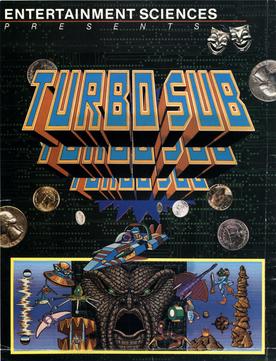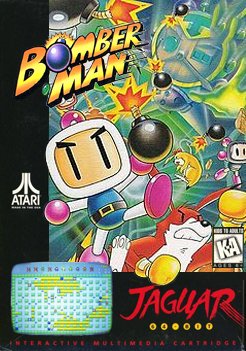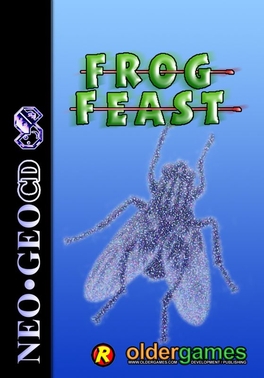Related Research Articles

Pong is a table tennis–themed twitch arcade sports video game, featuring simple two-dimensional graphics, manufactured by Atari and originally released on 29 November 1972. It was one of the earliest arcade video games; it was created by Allan Alcorn as a training exercise assigned to him by Atari co-founder Nolan Bushnell, but Bushnell and Atari co-founder Ted Dabney were surprised by the quality of Alcorn's work and decided to manufacture the game. Bushnell based the game's concept on an electronic ping-pong game included in the Magnavox Odyssey, the first home video game console. In response, Magnavox later sued Atari for patent infringement.

Centipede is a 1981 fixed shooter arcade video game developed and published by Atari, Inc. Designed by Dona Bailey and Ed Logg, it was one of the most commercially successful games from the golden age of arcade video games and one of the first with a significant female player base. The primary objective is to shoot all the segments of a centipede that winds down the playing field. An arcade sequel, Millipede, followed in 1982.

Imagic was an American video game developer and publisher that created games initially for the Atari 2600. Founded in 1981 by corporate alumni of Atari, Inc. and Mattel, its best-selling titles were Atlantis, Cosmic Ark, and Demon Attack. Imagic also released games for Intellivision, ColecoVision, Atari 8-bit family, TI-99/4A, IBM PCjr, VIC-20, Commodore 64, TRS-80 Color Computer, and Magnavox Odyssey². Their Odyssey² ports of Demon Attack and Atlantis were the only third-party releases for that system in America. The company never recovered from the video game crash of 1983 and was liquidated in 1986.
Tod R. Frye is an American computer programmer once employed by Atari, Inc., and is most notable for developing the home adaptation of Pac-Man for the Atari 2600 video computer system. Following the collapse of Atari he worked at video game and computer game companies such as 3DO and Pronto Games.

The Plaza Hotel & Casino is a hotel and casino located in downtown Las Vegas, Nevada. It currently has 995 rooms and suites, an 80,000-square-foot (7,400 m2) casino and more than 25,000 square feet (2,300 m2) of event space. The Plaza also features a showroom, rooftop swimming pool, fitness center, bingo room, multiple dining outlets, a sports book, and Oscar's Steakhouse, named after the former Mayor of Las Vegas, Oscar Goodman.

Steel Talons is a 3D combat flight simulator arcade game released by Atari Games in 1991. The player takes on the role of a pilot for an "AT1196 Steel Talons combat helicopter". Steel Talons was ported to the Sega Genesis, Atari Lynx, Atari Falcon, and the Super Nintendo Entertainment System. A Jaguar port was announced, but never released.
Bill Kunkel was a graphic novelist as well as pioneering professional wrestling and video game journalist and critic from the 1970s until his death in the early 2010s. During his time working with the video game industry, Kunkel authored numerous strategy guides, co-designed several video games, served as an expert witness in three court cases, and taught courses in Game Design for the University of Nevada, Las Vegas (UNLV). Kunkel served as the executive editor of Electronic Games Magazine and the editor-in-chief of Tips & Tricks magazine, writing columns and comics for several magazines and game sites. He often wrote under nicknames, the most common of which were "The Game Doctor", and "Potshot".

Assault is a 1983 fixed shooter video game developed and published by Bomb for the Atari 2600. Controlling a spaceship fixated at the bottom of the screen, gameplay involves the player shooting projectiles towards an enemy mothership that deploys smaller ships to attack the player. The player must also prevent enough projectiles from touching the bottom of the screen.

Halo 2600 is a 2010 action-adventure game developed by Ed Fries and published by AtariAge for the Atari 2600, a video game console released in 1977 that ended production in 1992. Inspired by the Halo video game series, the game sees players control Master Chief and fight through 64 screens with varied enemies. Completing the game once unlocks a tougher "Legendary" mode.

Turbo Sub is a first-person shoot 'em up released in arcades by Entertainment Sciences in 1985. Aliens have attacked the planet and the player fights them beneath the ocean using a submersible ship. Six years after the arcade original, Atari Corporation published a Lynx version, which adds a two-player mode.

Lost Luggage is a 1982 action video game developed and published by Games by Apollo for the Atari 2600. The player controls skycaps working at an airport and tries to collect pieces of luggage that fall overhead from a frantic luggage carousel. A two-player mode, in which the second player controls the direction the luggage falls, is also available.

The National Videogame Museum is a video game museum about the history of video games and the video game industry, located in Frisco, Texas. Opened in 2016, the museum includes classic video game arcade machines in an arcade setting, games on different video game consoles in a living room setting, games on historic computers, exhibits on the history of the industry, artifacts and memorabilia about the video game industry. One of the museum's goals is to have visitors experience the games, so there are many interactive displays which feature playable games.

Missile Command 3D is a shoot 'em up video game developed by Virtuality Entertainment and published by Atari Corporation for the Atari Jaguar in North America on December 12, 1995, and Europe on December 15 of the same year. Part of Atari Corp.'s 2000 series, it is an update to Dave Theurer's 1980 arcade game Missile Command and the only officially released title that features support for the unreleased Jaguar VR peripheral.

Iron Soldier 2 is an open world first-person mecha simulation video game developed by Eclipse Software Design and published by Telegames for the Atari Jaguar and Atari Jaguar CD on December 30, 1997. It is the sequel to Iron Soldier.

Bomberman Legends, also known as Jaguar Bomberman, is an unreleased action-maze video game that was in development by Genetic Fantasia and planned to be published by Atari Corporation for the Atari Jaguar. It was going to be a unique entry in the Bomberman franchise, featuring its own dedicated single-player and multiplayer modes, with the latter having support for up to eight players by using two Team Tap adapters.

Caves of Fear is an unreleased interactive movie video game developed by Atari Corporation in 1995 exclusively for the Atari Jaguar CD. It served as technology demonstration of the GameFilm, a then-newly developed in-house interactive movie format conceived by former Atari Corp. employee David Schwartz during his time at the company.

Space War 2000 is an unreleased first-person space combat simulation video game developed and originally planned to be published by Atari Corporation on a scheduled November 1995 release date exclusively for the Atari Jaguar. It is an update by Robert Zdybel of Ian Shepard's 1978 Atari 2600 game Space War. In the game, players assume the role of a space knight to fight against other opponents.

Frog Feast is a 2005 action homebrew video game developed by Rastersoft and originally published by OlderGames for the Neo Geo CD and Sega CD. It was later ported to Sega Genesis, Super Nintendo Entertainment System, X68000, CD-i, Atari Jaguar CD, Atari Jaguar, Amiga CD32, Dreamcast, and FM Towns Marty. Gameplay is similar to Frog Bog (1982), revolving around players controlling frogs on lilypads attempting to eat more flies than the other as the objective under a set time limit.
References
- ↑ "Classic Gaming Expo 2003". Dick Estel's World. Retrieved 13 October 2014.
- ↑ J C Herz (August 26, 1999). "In a Time Warp With Pac-Man and Pong". New York Times. Retrieved 13 October 2014.
- Jeff Cork (August 8, 2014). "Classic Gaming Expo Growing For 2014". Gameinformer. Retrieved October 13, 2014.
- "Classic Gaming Expo 1999". Digital Press. Archived from the original on October 17, 2014. Retrieved October 13, 2014.
- "Blue Sky Rangers at the 1999 Classic Gaming Expo". Intellivision. Archived from the original on November 4, 2014. Retrieved October 13, 2014. - ↑ "Classic Gaming Expo 2004". Dick Estel's World. Retrieved 13 October 2014.
- ↑ Hans Reutter (May 30, 2020). "World of Atari 1998 Video". Youtube. Hans Reutter. Retrieved May 30, 2020.
- ↑ Hans Reutter (May 30, 2020). "CGE Founders Session 2007 Video". Youtube. Hans Reutter. Retrieved May 30, 2020.
- ↑ Edward Burns (August 11, 2001). "CGE 2001 Video Montage". Youtube. Edward Burns. Retrieved June 9, 2017.